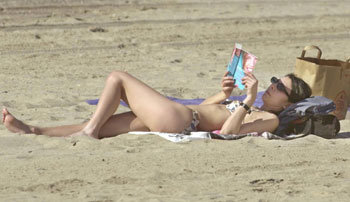Sunlight Good for Health

Most people believe that exposure to bright sunlight in summer season causes wrinkles and even skin cancer. Yet, there are many good things about sunlight, in fact.
Prof. Michael Holic at Boston University, who has studied sunlight-induced vitamin D, says that the sun does good to human bodies. Mild or regular exposure to sunlight helps prevent such diseases as osteoporosis, hypertension, diabetes, multiple sclerosis, rheumatism, depression, colon cancer, prostate cancer and breast cancer, said Prof. Holic. Sunlight is a good medicine for the human body.
When people absorb due amounts of sunlight, it helps bodies produce vitamin D that works to prevent many diseases. Vitamin D is generated when bodies are exposed to ultraviolet B or tanning machines.
Then, is there difference in amounts of vitamin D generated depending on races? The melanin pigment blocks the ultraviolet light and therefore, decides the amounts of vitamin produced. The darker a person`s skin color is, he or she has more melanin pigments. Dark-skinned people, therefore, have to expose themselves longer to sunlight to generate enough vitamin D.
According to a recent study, of African American women aged 15 to 42, 42% are vitamin D-deficient in winter times. Very dark-skinned black people has to expose themselves to sunlight up to 50 times longer than white people for the same amount of vitamin D.
The correlation between sunlight and skin color is also seen in racial differences. People living in the northern part of the world like Scandinavians have light skin to absorb more ultraviolet B and those living near the equator have dark skin to block the ultraviolet light.
Vitamin D helps people build and maintain strong bones. Without vitamin D, calcium alone cannot build and maintain strong bones. Vitamin D deficiency leads to weak muscle and bones, which are accompanied by pain.
The rise of rickets, a disease that causes bended backs among little children, seems to be related to the fact that mothers breastfeed their babies while keeping them away from sunlight or applying sun-block cream (vitamin D is not contained in breast milk), pointed out Holic.
A sun-block cream with SPF 8 cuts the ability to generate vitamin D by 95%, and one with SPF 15 by 99%.
A study conducted in Scandinavia found that a low level of vitamin D in blood raised the risk of prostate cancer by 50% compared to people with enough vitamin D. According to an eight-year study conducted in Baltimore, U.S., the lack of vitamin D also raised the risk of colon cancer by 50%.
Dr. William Grant at the U.S. National Aeronautics and Space Agency reported that people working outdoor or living sunny areas are less likely to develop such diseases as breast, colon, prostate, ovary, urine, uterus, esophagus, rectal and stomach cancer.
If all the Americans were exposed to bright sunlight as those living in southwest area, cancer cases and deaths would be reduced by 85,000 and 30,000 respectively every year, he said.
Dr. Holic, meanwhile, has found that exposing people with high blood pressure to UVB rays in a tanning salon lowers their blood pressure readings about as much as a drug will. He also found that increasing vitamin D improved the heart`s pumping ability and reduced cardiac strain.
Then how much vitamin D is enough? Although the official recommended amount ranges from 200 international units for infants to 600 for the elderly, Dr. Holick and other experts say 1,000 units a day are needed.
Between 90% and 95% of most people`s vitamin D comes from casual exposure to sunlight, Dr. Holic said. He proposes exposing unprotected skin to sunlight for a matter of minutes, with the recommended time determined by a person`s skin type, the time of year, the time of day and the latitude.
He suggests figuring out how long it takes for one`s skin to turn pink in the sun (not burned, just pink) and then exposing a quarter of one`s body (e.g., hands, arms and face or, if not the face, then the arms and legs) to the sun for one quarter of that time. After that, if a person plans to remain outdoors, the advice is to cover up or apply sunscreen that blocks both UVA and UVB rays.
Caucasians can build up enough vitamin D to last through the winter if they expose a quarter of the body surface to the sun for 5 to 10 minutes a day between 11 a.m. and 3 p.m. during the next five months.
(www.nytimes.com/2003/06/17/health/17BROD.html)
Jin-Han Lee likeday@donga.com







